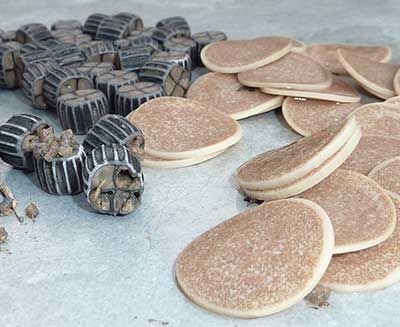Moving Bed Biofilm Reactor (MBBR) Carrier Media Case Study
When designing and planning a successful operation of the MBBR System within your wastewater treatment plant a very important consideration is the biofilm carrier to be utilized. Carrier based biofilm technology has been developed since at least the 19th century. However, in the last few decades, a myriad of options has been marketed.
To aid in the decision-making process we will attempt to break this analysis of biofilm media types into the following areas of consideration.
- Performance
- Required biodegradation rates
- Design, shape
- Stability, wear resistance
- Clogging, maintenance
Performance and required biodegradation rates
An important first step is to specify and determine the required biodegradation rates for your system. This will allow for the calculation of the required amount of carrier material. The following conditions need to be considered to accurately make these calculations.
- Operation related fluctuations in the pollutant concentrations in the wastewater
- Influent and effluent conditions
- Any possible toxic contaminants
- Design temperature
- Minimum temperature required for effective biological/biochemical metabolism
A common criterion used to choose an appropriate biofilm carrier and the amount needed is the "active surface area". The active surface area is a good indicator for the biodegradation performance of the carrier media. It is, however, very important to understand the specification of the biodegradation performance must be calculated in kg [pollutant] per m3 [carrier media] per day. This allows for calculation of the COD/BOD or nitrogen load to be removed. In summary, this is the only way to accurately calculate the required quantity of carrier media and the price related to the biodegradation efficiency per day.
Design and shape of the media
The type and density of material used in the carrier media is essential when planning your implementation of your MBBR System. The plastic carriers offered in the market are usually made of (polyethylene [PE]) virgin material or of more affordable re-granulates (recycled material).
Re-granulates
By their nature, being recycled material, re-granulates contain percentages of different plastics. This can negatively impact the durability of the media and these deficiencies are magnified under operating conditions. The importance of consistent material density cannot be understated, any deficiencies can lead to poor carrier movement characteristics. To account for these inconsistencies manufactures of re-granulate based carrier media often use plasticizers. Plasticizers combined with the re-granulates can release bisphenol A and phthalates which can cause cancer and other hormonal effects. This can be especially problematic for aquaculture and similar industries.
Virgin polyethylene
Our MBBR BioChip biofilm carrier is completely free from any phthalates or other plasticizers and does not contain bisphenol A or any other aromatic compounds. It is made of virgin polyethylene (no recycled PE), inorganic fillers, small amounts of monoester of glyceric acid (made from coconut fat; absolutely harmless), citric acid and soda (Na2CO3).
Stability, wear resistance
The next consideration is the choice between a dimensionally stable molded (PE or PP) extruded carrier or a mechanically stressable (i.e. flexible) material. Dimensionally stable carriers often possess the disadvantage of breaking even at small mechanical stress levels. Furthermore, they get increasingly abraded which is due to their stiffness being stressed by kinetic energy within the MBBR. Fractures at the bridges of the carriers are hence not unusual as shown below.

Right: Our mechanically flexible MBBR BioChip showing no wear of fracturing
A flexible and simultaneously highly wear-resistant material is considerably more applicable to efficient and trouble free MBBR system operation. Sponge-type carriers are flexible but they show signs of abrasion after only a short operating period (as shown in the photo above). Conversely, our highly fine-porous chip-type carrier offers all of the desired characteristics such as a high wear resistance, flexibility, virgin material and many other factors.
Clogging, maintenance
Depending on the sewage quality and the metabolic load, the carrier material may lead to excessive attachment of biomass. Tube-shaped carriers possess the negative characteristic of biomass accumulating within the inner area of the carrier. This biomass cannot be discharged and dies due to a lack of substrate supply and in aerobic applications due to a lack of oxygen supply. The dead biomass then blocks the active carrier surface area required for attaching biologically active biomass and reduces the biodegradation efficiency. Our thin, fine-porous chip biofilm carrier has the average thickness of approximately 1.0 mm (similar to the thickness of a coin) and has the advantage that the oxygen and the substrate can diffuse from both sides into the carrier to a depth of 0.5 mm. Consequently, the biofilm can be held active and will not die due to clogging.
The transportation costs for the total carrier quantity as well as the filling periods are as important as a proper commissioning instruction and the support in the choice of the carrier media retention system and the aeration system.
Summary
In addition to the performance, shape, stability, wear resistance, plasticizers and their possible impacts it is important to choose a company that can provide professional support for the entire design, build, implementation and ongoing maintenance/support of your MBBR System. With experience in all aspects of the treatment of wastewater from a wide variety of industries using MBBR technology we at Ecologix would love to discuss your next project with you today.